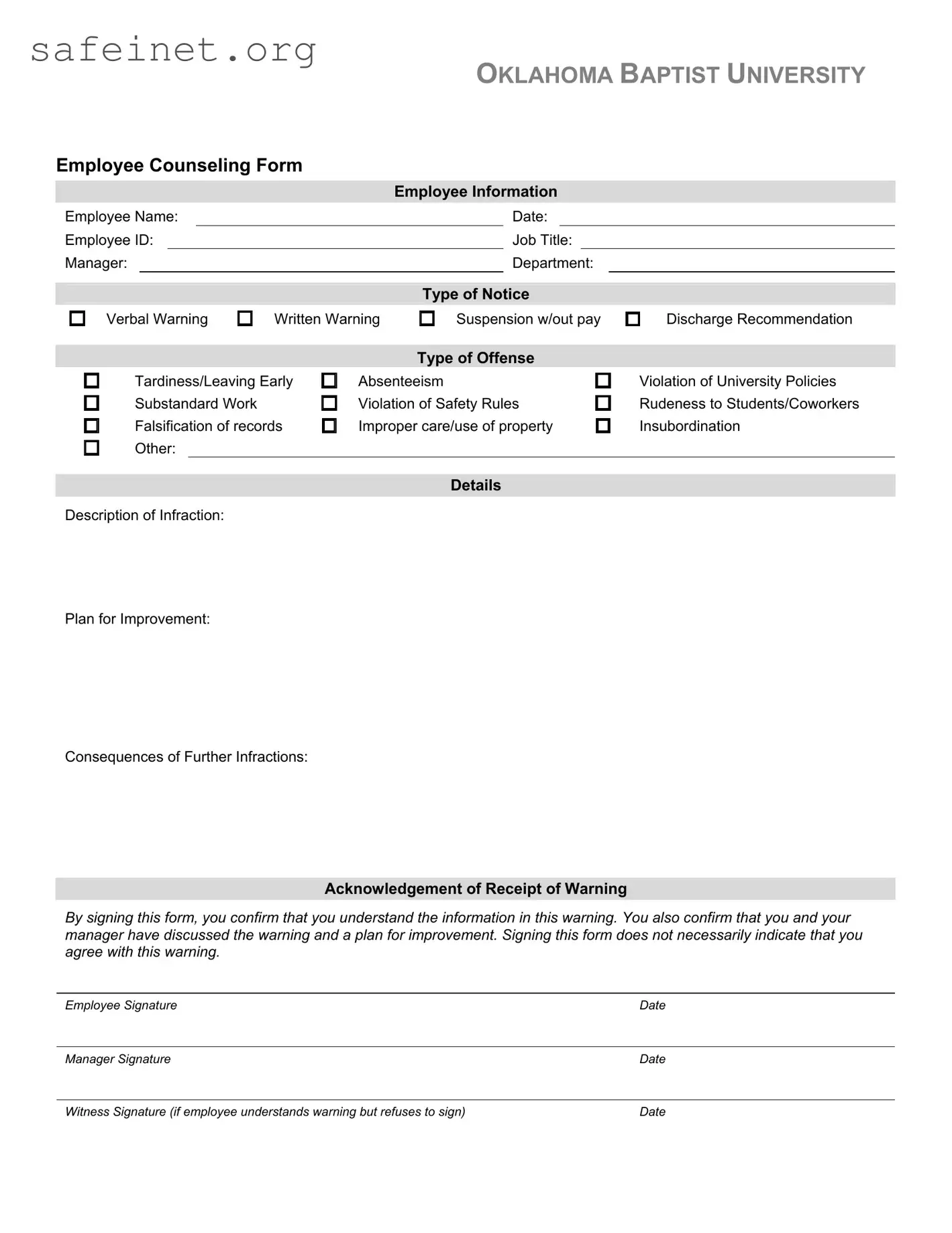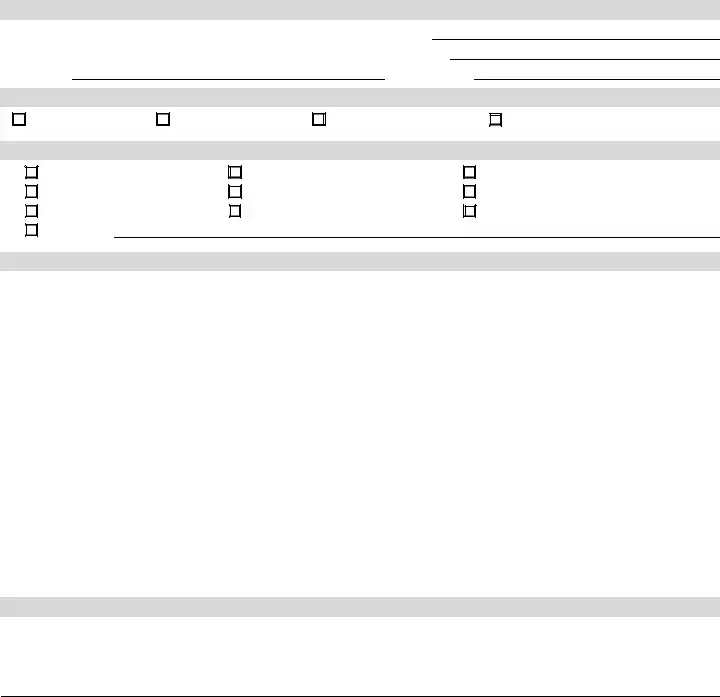What is the purpose of the Employee Counseling Form?
The Employee Counseling Form serves as a formal record of a disciplinary action taken against an employee. It outlines the type of notice given, the offense committed, a plan for improvement, and consequences for further infractions. This form helps ensure that both the employee and the manager are on the same page about expectations moving forward.
What types of notices can be recorded on this form?
The form allows for several types of notices, including verbal warnings, written warnings, suspensions without pay, and discharge recommendations. The specific notice used will depend on the severity and context of the employee's infraction.
What offenses can be documented in this form?
Common offenses that can be documented include tardiness or leaving early, absenteeism, substandard work performance, safety rule violations, and breaches of university policies. It also encompasses rudeness to students or coworkers, falsification of records, improper use or care of property, and insubordination. Other specific issues can also be added as needed.
What should be included in the 'Description of Infraction' section?
This section should provide a detailed account of the behavior or action that led to the counseling. Be clear and specific about what occurred, when it happened, and any relevant context. This helps provide clarity and ensures that the employee fully understands the nature of the infraction.
Why is a 'Plan for Improvement' necessary?
A 'Plan for Improvement' outlines the steps the employee needs to take to rectify the issues discussed and adhere to workplace expectations. This not only helps the employee improve but also shows the employer’s commitment to supporting their development. It can include timelines, benchmarks, and resources for assistance.
What are the consequences of further infractions?
This section outlines what will happen if the employee fails to improve or repeats the same or similar infractions. Consequences might range from additional warnings to suspension or termination. Clarity in this area is crucial, as it underscores accountability and helps prevent future misunderstandings.
What does signing the form signify?
Signing the form indicates that the employee acknowledges they have received the warning and discussed it with their manager. It is important to note that signing does not mean the employee agrees with the warning; it merely shows they understand the contents of the document. If an employee refuses to sign, a witness may sign instead.
Who can act as a witness on the form?
A witness could be any neutral third party present during the discussion of the warning. This may be a colleague, another manager, or an HR representative. The witness's signature serves to validate the process and ensure transparency in the disciplinary action taken.
What should an employee do if they disagree with the counseling form?
If an employee disagrees with anything stated in the counseling form, they should address their concerns with their manager or HR representative. Open communication is encouraged, and discussing disagreements is a vital part of the workplace culture. Documentation of their objections can also be included with their signature.

